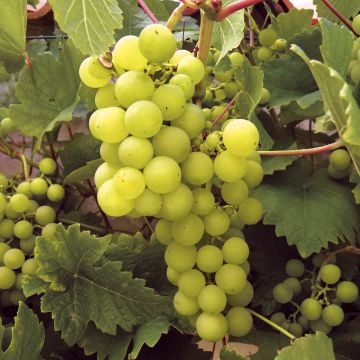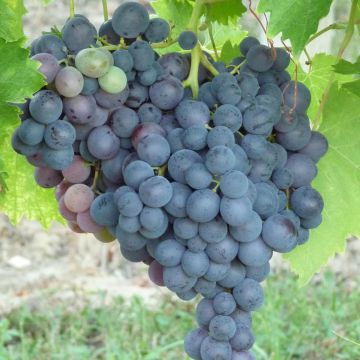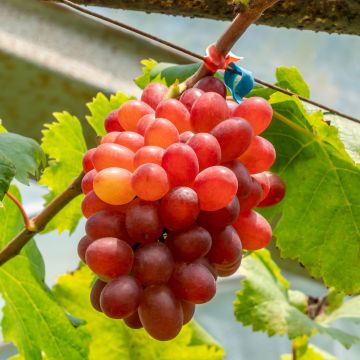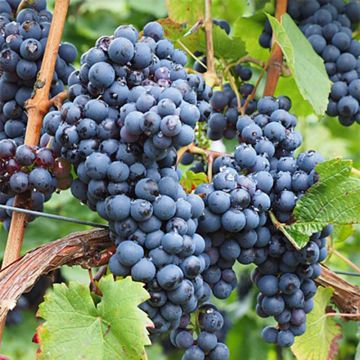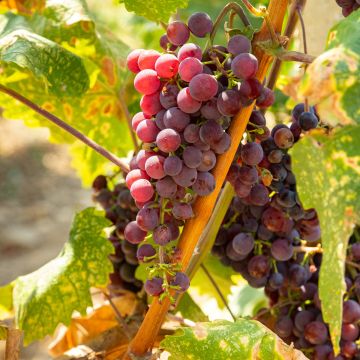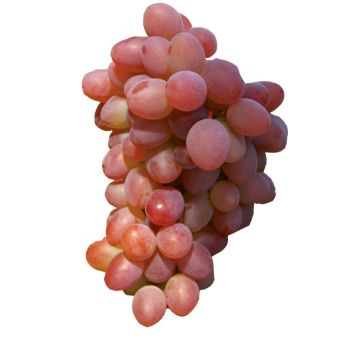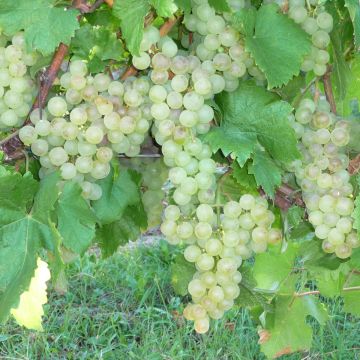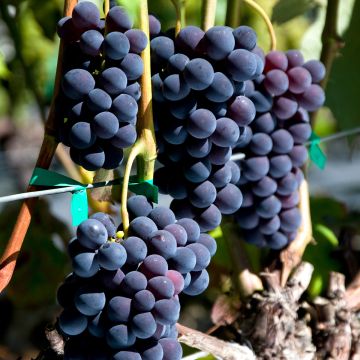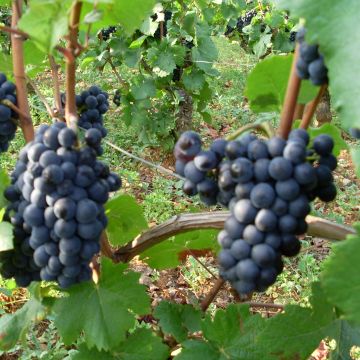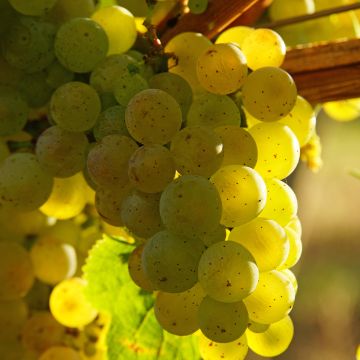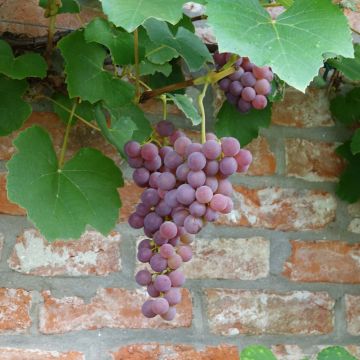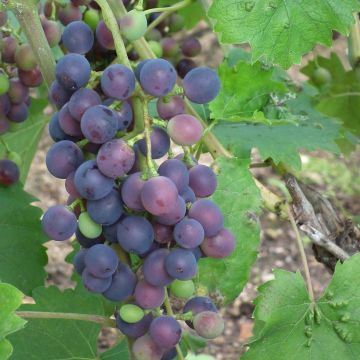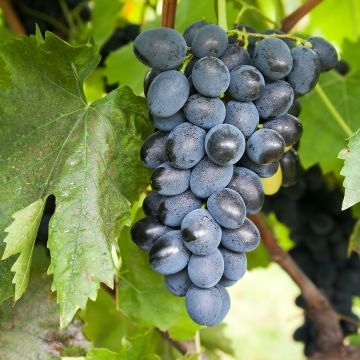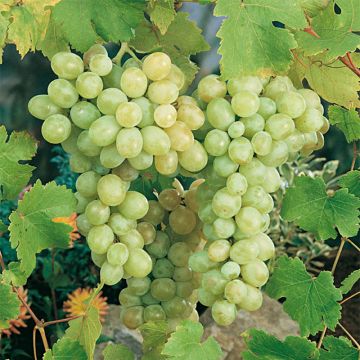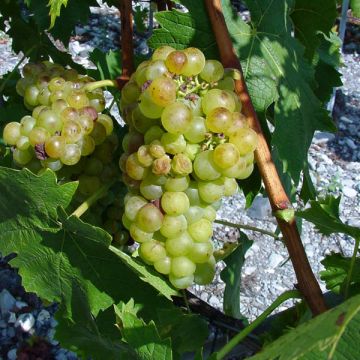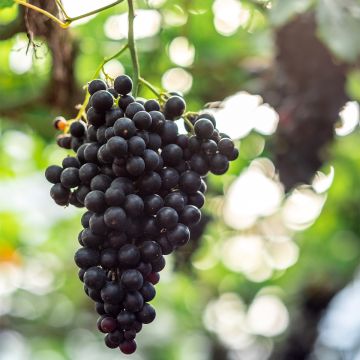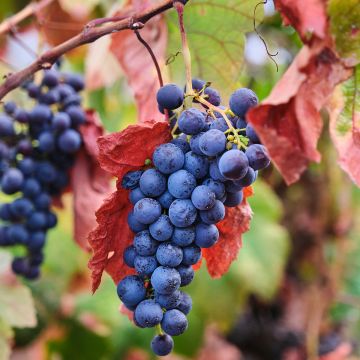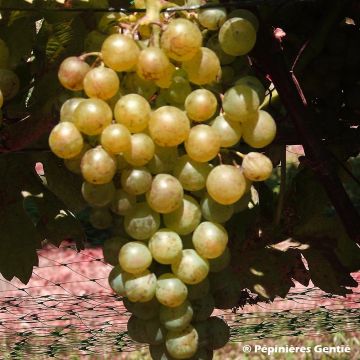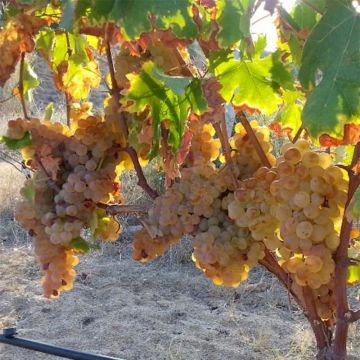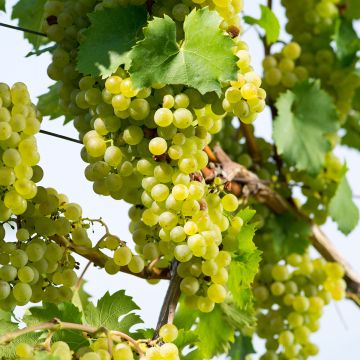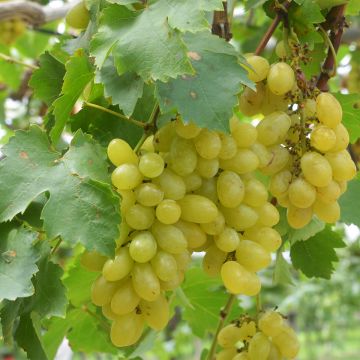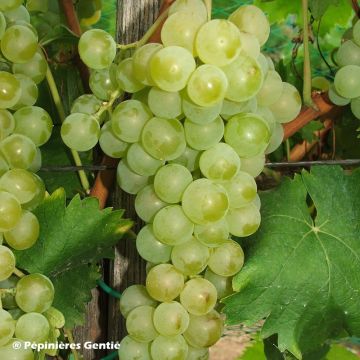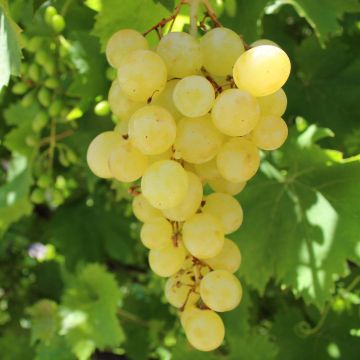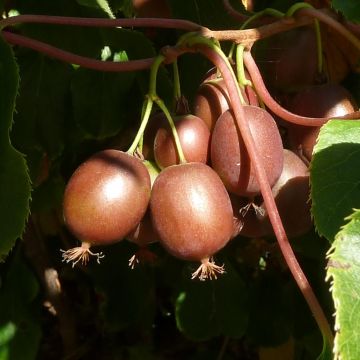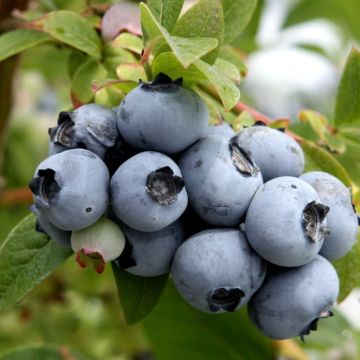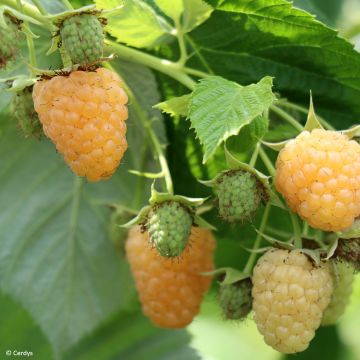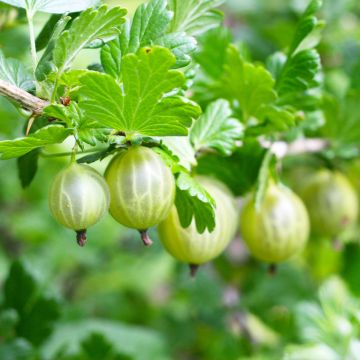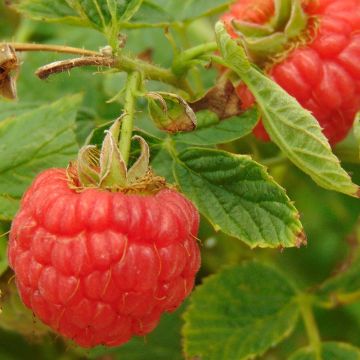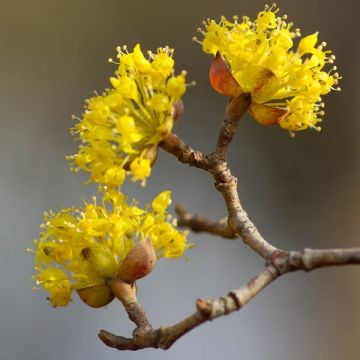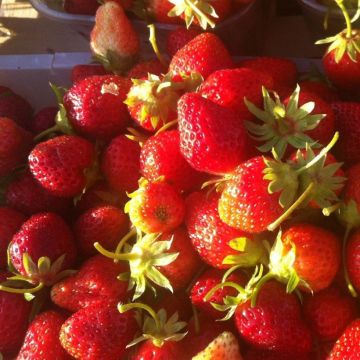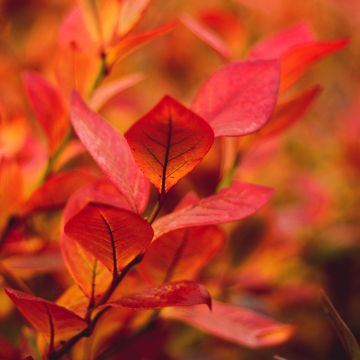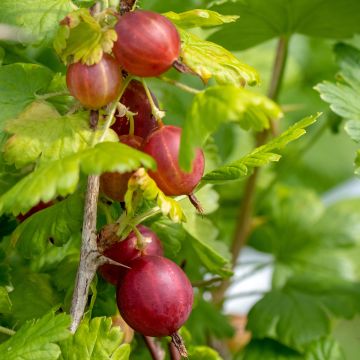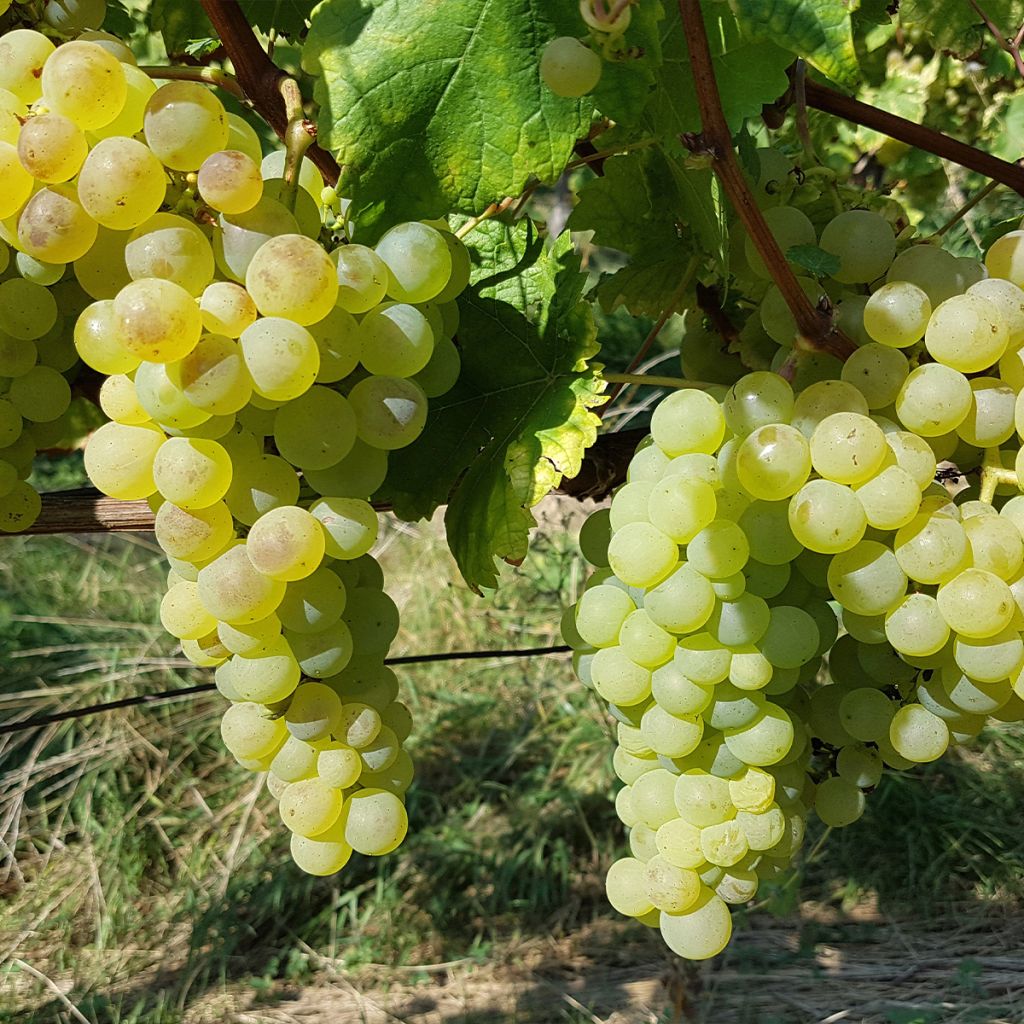

Vitis vinifera Chasselas Fontainebleau - Grape vine
Vitis vinifera Chasselas Fontainebleau - Grape vine
Vitis vinifera Chasselas De Fontainebleau
Common Grape Vine, European Grape, Wine Grape
Why not try an alternative variety in stock?
View all →This plant carries a 6 months recovery warranty
More information
We guarantee the quality of our plants for a full growing cycle, and will replace at our expense any plant that fails to recover under normal climatic and planting conditions.
From €5.90 for pickup delivery and €6.90 for home delivery
Express home delivery from €8.90.
Delivery to Corse prohibited: UE law prohibits the import of this plant from mainland France to Corse as part of the fight against Xylella fastidiosa. Please accept our sincere apologies.
More information
Description
The Golden Chasselas of Fontainebleau is a reference variety in the world of grapevines. This table grape variety, one of the most appreciated among white grapes, can also be used for winemaking. It produces medium-sized clusters of golden yellow grapes with thin skin and juicy pulp, with a very pleasant flavour. This very old grape variety can be pruned short or long and is not very susceptible to grey rot and mites. However, it is susceptible to powdery mildew, wood diseases, and grape worms. This vine thrives in most neutral to limestone soils, well-drained and sunny. It is resistant to cold temperatures.
The wine grape (Vitis vinifera) grew wild over 5000 years ago in North and Central America, Europe, and Central and Eastern Asia. The subspecies sylvestris still exists, it is a climbing liana, growing on the edge of forests and capable of reaching great heights in trees. Its introduction in France for cultivation was done by the Phocaeans in Provence, around 600 BC. The current varieties, referred to as grape varieties, are linked to the subspecies vinifera (although there are other cultivated species, but very minor ones). Economically, wine grapes predominate over table grapes, with over 200 authorized varieties in France, the result of centuries of selection work.
This ancient variety, the Golden Chasselas of Fontainebleau vine was supposedly sent from Cahors to Fontainebleau by King Henry IV before 1600. In reality, according to certain genetic studies, it is believed to originate from Switzerland, or perhaps from Burgundy. A vigorous climbing vine, the Golden Chasselas of Fontainebleau vine is a climber that can easily reach a height or spread of 5m (16ft) if not pruned. Its final shape will depend on the pruning practiced. A vine with very long tendrils in the case of this variety, it nonetheless needs to be attached to its support to help it stand and climb: trellis, fence, arbor, pergola... It is also a frugal sun-loving plant, not very demanding, which even prefers a soil that is both clayey and rocky, with a tendency towards limestone, but can be sensitive to prolonged drought. Its leaves are reddish when they emerge in spring, then take on an almost pentagonal shape, with 5 slightly cut lobes. Its flowering occurs in May-June depending on the year and region, offering very small greenish flowers gathered in medium-sized conical clusters. They produce golden yellow berries, also of medium size, ripening in August and September depending on the region. These berries with thin skin have very juicy and flavourful pulp. Note that the clusters can be subject to millerandage, meaning that some berries abort, while others develop imperfectly, both in size and ripeness.
Very hardy (up to -20°C, or even -25°C), this vine grows in full sun, in an ordinary, even rocky soil, as long as it is not too dry. Not very susceptible to grey rot and mites, this vine is sensitive to powdery mildew, which should be monitored and treated with sulfur if necessary. It is also prone to wood diseases (excoriosis and eutypiosis) as well as grape worms.
The Golden Chasselas of Fontainebleau grapes can be consumed as table grapes or in juice, for example in a vitamin-packed fruit cocktail for breakfast. To enjoy a variety of flavors, plant the astonishing 'Philipp' black grape vine alongside it, with its curious pear-shaped elongated berries. A self-fertile 'Issai' Kiwi will also allow you to enrich your autumn fruit salads with calcium and vitamin C.
Report an error about the product description
Vitis vinifera Chasselas Fontainebleau - Grape vine in pictures
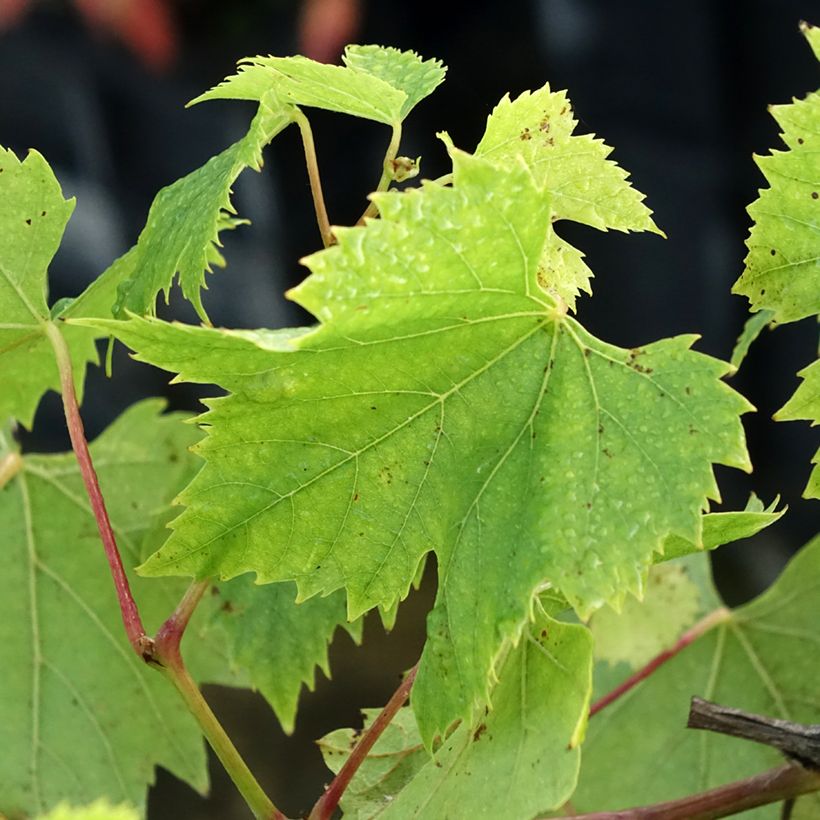

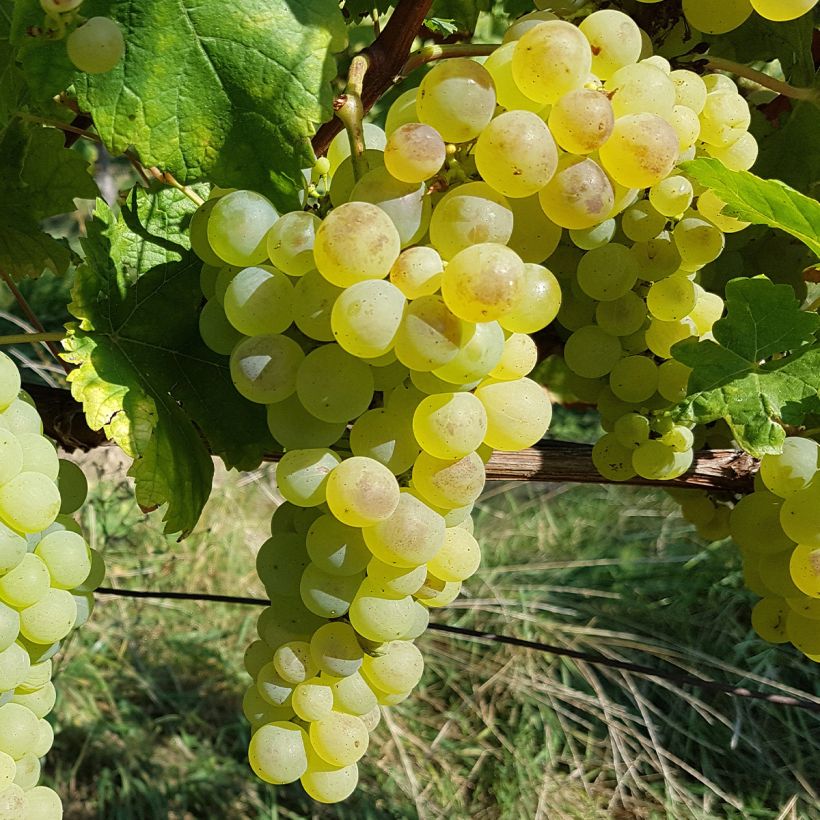

Plant habit
Fruit
Flowering
Foliage
Botanical data
Vitis
vinifera
Chasselas De Fontainebleau
Vitaceae
Common Grape Vine, European Grape, Wine Grape
Cultivar or hybrid
Other Grapevines
Planting and care
Since the ravages of phylloxera at the end of the 19th century, the vine is obligatorily grafted onto different resistant rootstocks to this disease and adapted to different types of soil. These rootstocks come from American varieties naturally armed against this formidable parasite itself of American origin.
Plant the Chasselas de Fontainebleau vine in autumn, in a deep, well-drained soil, even stony, clayey and limestone, knowing that the vine is not very demanding in terms of the chemical nature of the soil. It is capable of adjusting to moderately acidic soil (up to pH 6 approximately, because below this level there are assimilation blocks for certain trace elements), neutral and limestone up to pH 8.5 approximately (knowing that in this case, it is actually the excess of active limestone that is detrimental).
Install it in a sunny location, sheltered from strong, cold and dry winds. This variety tolerates winter frosts, it is hardy down to -20°/-25 °C. Incorporate 3 or 4 handfuls of fertilizer for fruit trees and 2kg of composted manure for each vine into the planting soil. Attention, the roots must not come into contact with the manure. After planting, prune above 2 large buds (buds) in order to obtain the growth of two shoots. Keep the most vigorous one and tie it to a stake. Then follow the training pruning.
The vine does not require regular fertilization, quite the opposite for good yield. In soil that is too rich, vegetation (leaves) will develop at the expense of fruiting. Enrich the soil with potash slag, crushed horn or iron chelate, only every 2-3 years.
This variety is not sensitive to grey rot or mites. However, watch out for powdery mildew in order to treat it in time (sulphur). It is also susceptible to Eutypiosis and Excoriosis, two wood diseases for which there is not really a treatment, as well as grape worms.
Planting period
Intended location
Care
This item has not been reviewed yet - be the first to leave a review about it.
Berries
Haven't found what you were looking for?
Hardiness is the lowest winter temperature a plant can endure without suffering serious damage or even dying. However, hardiness is affected by location (a sheltered area, such as a patio), protection (winter cover) and soil type (hardiness is improved by well-drained soil).

Photo Sharing Terms & Conditions
In order to encourage gardeners to interact and share their experiences, Promesse de fleurs offers various media enabling content to be uploaded onto its Site - in particular via the ‘Photo sharing’ module.
The User agrees to refrain from:
- Posting any content that is illegal, prejudicial, insulting, racist, inciteful to hatred, revisionist, contrary to public decency, that infringes on privacy or on the privacy rights of third parties, in particular the publicity rights of persons and goods, intellectual property rights, or the right to privacy.
- Submitting content on behalf of a third party;
- Impersonate the identity of a third party and/or publish any personal information about a third party;
In general, the User undertakes to refrain from any unethical behaviour.
All Content (in particular text, comments, files, images, photos, videos, creative works, etc.), which may be subject to property or intellectual property rights, image or other private rights, shall remain the property of the User, subject to the limited rights granted by the terms of the licence granted by Promesse de fleurs as stated below. Users are at liberty to publish or not to publish such Content on the Site, notably via the ‘Photo Sharing’ facility, and accept that this Content shall be made public and freely accessible, notably on the Internet.
Users further acknowledge, undertake to have ,and guarantee that they hold all necessary rights and permissions to publish such material on the Site, in particular with regard to the legislation in force pertaining to any privacy, property, intellectual property, image, or contractual rights, or rights of any other nature. By publishing such Content on the Site, Users acknowledge accepting full liability as publishers of the Content within the meaning of the law, and grant Promesse de fleurs, free of charge, an inclusive, worldwide licence for the said Content for the entire duration of its publication, including all reproduction, representation, up/downloading, displaying, performing, transmission, and storage rights.
Users also grant permission for their name to be linked to the Content and accept that this link may not always be made available.
By engaging in posting material, Users consent to their Content becoming automatically accessible on the Internet, in particular on other sites and/or blogs and/or web pages of the Promesse de fleurs site, including in particular social pages and the Promesse de fleurs catalogue.
Users may secure the removal of entrusted content free of charge by issuing a simple request via our contact form.
The flowering period indicated on our website applies to countries and regions located in USDA zone 8 (France, the United Kingdom, Ireland, the Netherlands, etc.)
It will vary according to where you live:
- In zones 9 to 10 (Italy, Spain, Greece, etc.), flowering will occur about 2 to 4 weeks earlier.
- In zones 6 to 7 (Germany, Poland, Slovenia, and lower mountainous regions), flowering will be delayed by 2 to 3 weeks.
- In zone 5 (Central Europe, Scandinavia), blooming will be delayed by 3 to 5 weeks.
In temperate climates, pruning of spring-flowering shrubs (forsythia, spireas, etc.) should be done just after flowering.
Pruning of summer-flowering shrubs (Indian Lilac, Perovskia, etc.) can be done in winter or spring.
In cold regions as well as with frost-sensitive plants, avoid pruning too early when severe frosts may still occur.
The planting period indicated on our website applies to countries and regions located in USDA zone 8 (France, United Kingdom, Ireland, Netherlands).
It will vary according to where you live:
- In Mediterranean zones (Marseille, Madrid, Milan, etc.), autumn and winter are the best planting periods.
- In continental zones (Strasbourg, Munich, Vienna, etc.), delay planting by 2 to 3 weeks in spring and bring it forward by 2 to 4 weeks in autumn.
- In mountainous regions (the Alps, Pyrenees, Carpathians, etc.), it is best to plant in late spring (May-June) or late summer (August-September).
The harvesting period indicated on our website applies to countries and regions in USDA zone 8 (France, England, Ireland, the Netherlands).
In colder areas (Scandinavia, Poland, Austria...) fruit and vegetable harvests are likely to be delayed by 3-4 weeks.
In warmer areas (Italy, Spain, Greece, etc.), harvesting will probably take place earlier, depending on weather conditions.
The sowing periods indicated on our website apply to countries and regions within USDA Zone 8 (France, UK, Ireland, Netherlands).
In colder areas (Scandinavia, Poland, Austria...), delay any outdoor sowing by 3-4 weeks, or sow under glass.
In warmer climes (Italy, Spain, Greece, etc.), bring outdoor sowing forward by a few weeks.

































